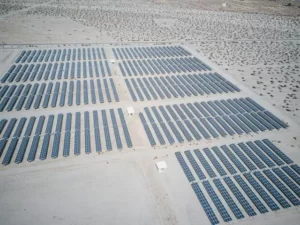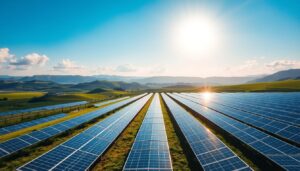While solar energy promises a greener future, marrying new panels to an existing system isn't always a match made in heaven. You're standing at a crossroads: the desire to upscale your energy production versus the technical feasibility and cost implications of such a decision. It's crucial to assess system compatibility and understand the limitations of your current inverter. Moreover, the financial aspect cannot be ignored, as adding more panels involves more than just the cost of the hardware. As we navigate the intricacies of installation and integration, you'll find that enhancing system efficiency is both an art and a science. This journey might just reshape your approach to sustainable energy.
Key Takeaways
- Expansion requires evaluating roof space and ensuring new panels are compatible with the existing system.
- Inverter capacity must be assessed to avoid overloading and ensure efficient operation.
- Additional costs include not just the panels, but potential roof adjustments and maintenance expenses.
- Regulatory compliance and optimal panel alignment are crucial for maximizing system efficiency.
Assessing System Compatibility
Before diving into the expansion of your solar panel system, it's crucial to first assess whether your current setup and the new components are compatible, ensuring a seamless integration. One of the first aspects you've got to consider is the available roof space. It's not just about having enough square footage; you've also got to think about the orientation and shading throughout the day. More panels mean you'll need more unobstructed space to ensure each panel performs optimally.
Next, delve into the compatibility of panel models. Mixing different types of panels can lead to inefficiencies, as they might not operate effectively together. Each panel model has its specific electrical characteristics, such as voltage and current output. If you're thinking of adding new panels to an existing array, you'll need to ensure these characteristics are closely matched. This ensures that the system operates efficiently and avoids potential issues like mismatch losses, where panels operate at reduced efficiency due to differences in performance.
In essence, carefully evaluating your roof space and the compatibility of panel models ahead of time can save you from headaches down the line and help ensure your expanded solar system functions as efficiently as possible.
Understanding Inverter Capacity
Assessing the capacity of your existing inverter is a critical step in ensuring that the addition of new solar panels won't overload its capabilities, potentially compromising the efficiency and safety of your solar energy system. Your inverter's efficiency and its power limitations are central to this assessment. Inverters convert the DC power generated by your solar panels into AC power usable in your home. However, each inverter has a maximum capacity it can handle effectively.
To understand inverter capacity, consider these key points:
- Rated Power Output: This is the maximum AC power your inverter can deliver to your home. Exceeding this can lead to reduced inverter efficiency.
- Surge Capacity: Some inverters can handle brief overloads for short periods. Knowing this can be crucial.
- Inverter Efficiency: The efficiency at which your inverter converts DC to AC power. Higher efficiency means less energy loss.
- Power Limitations: Recognizing the power limitations of your current setup is essential to avoid overloading the system.
- Expansion Capability: Some inverters are designed with future expansions in mind, offering modular options to increase capacity.
Calculating Additional Costs
When considering the expansion of your solar panel system, it's crucial to meticulously calculate the additional costs involved, ranging from hardware to potential increases in maintenance expenses. Delving into the specifics, you'll need to assess not just the price of additional panels but also any necessary upgrades to your current system's infrastructure, such as mounts or inverters, to accommodate the increased capacity.
| Factor | Impact on Cost |
|---|---|
| Additional Panels | Direct cost of hardware |
| Roof Space | Potential structural adjustments |
| Rebate Eligibility | Possible reduction in expenses |
Analyzing roof space is a significant aspect because it determines not only the potential for expansion but also whether structural modifications will be needed to support the additional weight or to optimize the layout for sunlight exposure. This directly ties into the cost equation, as modifications can significantly increase the initial budget.
Furthermore, rebate eligibility plays a critical role in offsetting some of these costs. Depending on your location and the specifics of your expansion, you might qualify for government rebates or tax incentives, which could substantially reduce your out-of-pocket expenses. It's essential to research current programs and calculate their impact on your overall budget.
Installation and Integration Process
Having meticulously calculated the additional costs involved in expanding your solar panel system, it's crucial to understand the installation and integration process to ensure seamless operation and optimal performance. This phase is complex and requires careful planning and execution. Here's what you need to consider:
- Assessment of Roof Space: Before adding more panels, you'll need to evaluate the available roof space. It's essential to ensure that your roof can accommodate the additional panels without compromising their efficiency due to shading or orientation issues.
- Permitting Issues: Depending on your location, you may face permitting challenges. It's vital to research and comply with local regulations and building codes to avoid legal complications.
- Compatibility Check: Ensure the new panels are compatible with your existing system. This includes checking the voltage, connectors, and inverters to guarantee they can work together efficiently.
- Professional Installation: Hiring a professional installer who is experienced in expanding solar systems is recommended. They can address potential challenges and ensure that the system is correctly integrated.
- System Testing: After installation, thorough testing is necessary to confirm that the entire system functions as expected, including the newly added components.
Enhancing System Efficiency
After successfully integrating additional panels into your system, it's crucial to turn your attention towards optimizing efficiency to ensure you're maximizing the solar energy harvested. Two key factors in this process are panel orientation and shading analysis. Correctly addressing these can significantly boost your system's performance.
| Factor | Importance |
|---|---|
| Panel Orientation | Aligning your panels correctly with respect to the sun's path is crucial. It maximizes exposure to sunlight, directly influencing the amount of solar energy your system can capture. For most locations, panels should face south at an angle that matches your latitude. |
| Shading Analysis | Even the smallest shadow on your panels can drastically reduce their efficiency. Conducting a shading analysis helps identify potential obstructions like trees or buildings that might cast shadows during the day. This analysis enables you to reposition your panels or trim foliage to minimize shading. |
Conclusion
In conclusion, expanding your solar panel system is feasible, provided your current setup and inverter can accommodate the addition. It's crucial to meticulously assess compatibility and understand the capacity limits of your inverter. Anticipate extra costs, not just for the panels but for potential upgrades and installation. The integration process demands precision to ensure efficiency gains. By carefully planning and executing the expansion, you can significantly enhance your system's performance, making your investment in solar energy even more rewarding.



